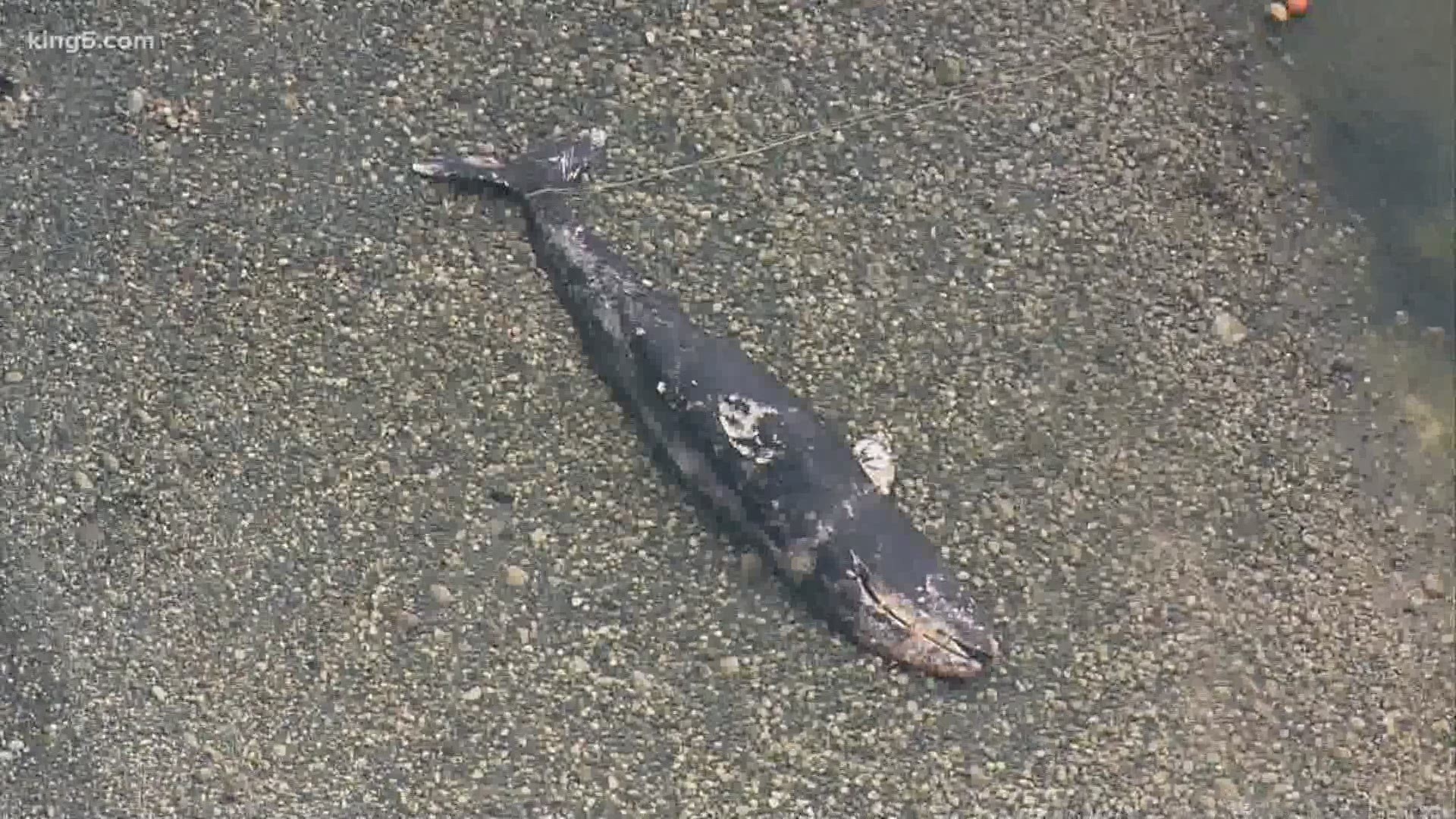BAINBRIDGE ISLAND, Wash. — A dead gray whale washed up on Bainbridge Island on Tuesday, making it the sixth one to be found dead in Washington this year.
Federal officials said it's part of an ongoing issue researchers are still trying to understand.
The gray whale appeared to have been floating for some time and was partially decomposed, said Michael Milstein with NOAA Fisheries. It is an adult female, 42 feet long.
In 2019, 215 gray whales died along the west coast from Mexico to Alaska – prompting officials to declare an “unusual mortality event,” or UME. 111 have turned up on the west coast this year, as of May 12 data.
“We’re running above average, but not at the same pace as last year,” Milstein said.
RELATED: 'I babysat a whale all day': Rescuers describe freeing gray whale from fishing net near Port Angeles
Many of the whales appear thin, Milstein said.
NOAA believes something impacted the whales’ summer feeding season in the Arctic. They can’t say what, but it’s a critical time for grays before they travel thousands of miles along the coast.
“For some reason, this and other whales are stranding. They didn’t put on enough weight and are essentially running out of energy on their way back North before they make it all the way,” Milstein said.
A gray whale washed up in Everett's Harborview Park last year - it was determined that in died of starvation. So many were found in Washington that officials were running out of places to take them to decompose.
A similar event happened in 1999 and 2000 involving hundreds of dead whales. Now, Milstein said grays are doing well. Estimates place about 27,000 of the animals out there in the oceans. Still, the deaths are a concern.
“The overall population has been a success, but you know what we’re seeing now gives us a pause, because it may reflect something about the environment and what’s happening to the population,” Milstein said.
A recent paper published by the International Whaling Commission, the group responsible for the conservation and management of whales, studied the 2019 UME.
Researchers put forward to theories for the deaths: one, whales are at the carrying capacity in the region, and there’s “insufficient prey in the system to sustain all individuals…”
The second: “environmental factors impacting resource productivity or the availability in Arctic summer feeding grounds…”
Though the researchers note that “between 2017 and 2019, there were unprecedented loss of sea ice and substantial increases in sea surface temperatures in Bering and Chukchi Sea water suggesting transformative changes to the ecosystem. The contribution of environmental, traumatic, infectious, toxic and other processes to malnutrition and increased gray whale mortalities have not yet been resolved.”
The Bainbridge whale will be towed to a site in the south sound for further analysis, and to decompose. It was rigged for the journey Wednesday, NOAA said.
The team expects to study it Friday.

